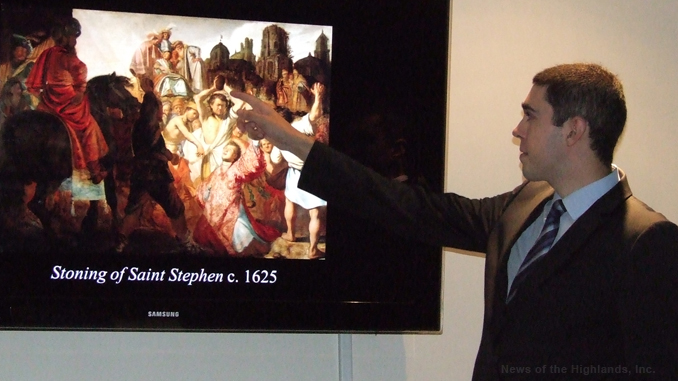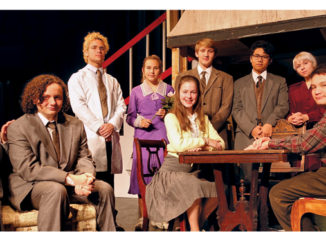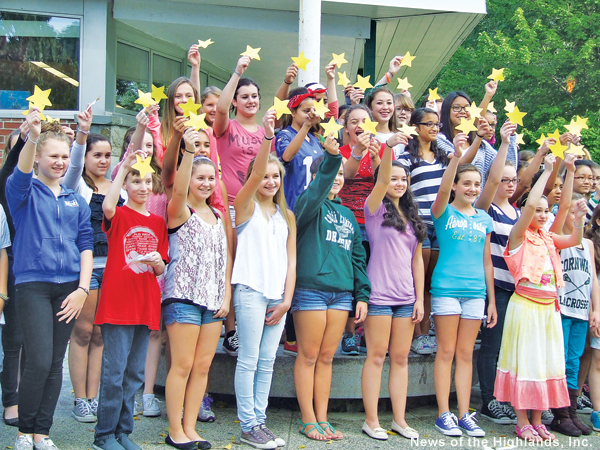
When Matt Soltis graduated from Cornwall Central High School in 2010, he attempted to pursue a career in education. Unfortunately, the best laid plans don’t always come to fruition. Soltis is not one to give up and is slowly trying to get his life back on track.
Soltis attended SUNY Orange before enrolling at Mount Saint Mary College in the fall of 2011. There he majored in history and minored in art.
Since he was a young boy, Soltis had an interest in history, viewing it as one of the easiest academic subjects. He enjoyed studying American history, WWII, and to a lesser extent, the German air force.
His love for art extended from classes he took while at The Mount.
“I took classes where we studied the history of the art, but also took classes involved in creating art,” he said. “In doing that I discovered a love for creating it as well.”
Soltis began spending a lot of time in the art studios, often taking canvases back to his dorm room to continue painting. Over the years, he developed an interest in creating portraits, especially those of famous female celebrities. His favorite subject – Natalie Portman.
After graduation, Soltis couldn’t find a job in the history field, so he obtained a job in the food service industry as he happened to be a decent cook.
“I quit that job because I wanted to do something I’m qualified and love to do. I want to make a difference. I want to really matter and influence people.”
That’s when he started giving lectures about art and history. With the help of local landscape artist, Paul Gould, Soltis was put in touch with Sandra Brandman, Mount Saint Mary College’s acting coordinator for community education, as well as local library directors. Over the past two years, Soltis has given lectures on such subjects as Pearl Harbor, the Mona Lisa, and Rembrandt.
Looking ahead, Soltis hopes to go back to school and earn his master’s degree in education. He’d like to become a college professor or teach children in a public school setting.
“I can’t emphasize it enough how much I want to instill a love of learning in our young people,” Soltis said. “That is probably the most important thing. We have to teach our young people how to learn, to be curious, to ask questions, to be capable of critical thinking.”
Soltis continues to pursue his love of art as a member of the Cornwall Arts Collective.
The Rise and Fall of Rembrandt
On June 13, Matt Soltis presented an art history lecture at Mount Saint Mary College. The focus was on the rise and fall of Rembrandt, as told through six self portraits.
Rembrandt Harmenszoon van Rijn was born on July 15, 1606 in the city of Leiden. He grew up as the 80 Years War and Dutch Revolution were taking place.
Rembrandt studied at the University of Leiden, but had more of an interest in painting. He took up an apprenticeship with Jacob van Swanburgh where he learned to mix pigments and prepare the canvas for painting. In 1624, his apprenticeship comes to an end and he takes up another with Peter Lastman.
Self Portrait with Gorget (1629) – A young Rembrandt depicts himself wearing military armor, possibly influenced by the war going on in the background of his life. His love of theater seems to show through in his desire to dress up for an audience. The style is smooth and realistic. The use of light and dark is typical of Rembrandt’s work.
Self Portrait (1634) – Married and finding success in his career as an artist, Rembrandt ditches the armor for a more imperial or regal appearance. The portrait is actually an etching, one of 400 to 600 Rembrandt created during his lifetime.
Self Portrait with Beret (1640) – Rembrandt is getting older and the portrait reflects the battle scars he suffered in life. He and his wife have five children, all but one die within a month of being born. Rembrandt also lost his wife to tuberculosis.
Self Portrait (1657) – Rembrandt continues to age. His clothes are dull and raggedy. His hat looks like it’s been nibbled on by critters. Some experts think Rembrandt’s face shows evidence of rosacea, but Soltis disagrees, going with the theory his face portrays the battle scars of his life.
Self Portrait with Two Circles (1669) – Rembrandt’s second to last portrait is devoid of detail, deviating from the smooth realistic style. There is mystery behind the two circles in the background. Soltis said it could be the artist demonstrating his skill at being able to draw a perfect circle freehand.
Self portrait (1669) – This portrait continues to show the tragedy in Rembrandt’s life. His son had passed the year prior and his common law wife, Hendrickje Stoffels, in 1663. The portrait was completed the same year Rembrandt died. His face is mangled and prune-like, but he bears a smile as if he knows he’ll be famous one day. The painting is very dark, depicting his state of life. He appears to be fading away like a ghost.



